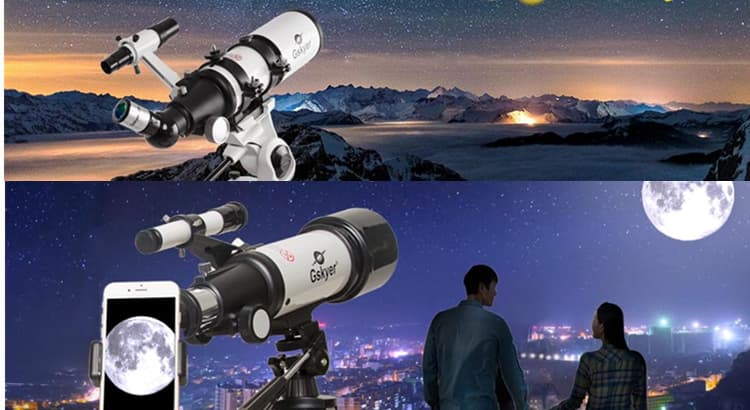How’s it going, fellow star seekers and cosmic ponderers! If you’ve recently embarked on your astronomical journey and found yourself squinting at celestial wonders that seem to defy gravity by appearing upside down, you’re not alone.
The perplexing question arises: “Is it normal for a telescope to be upside down?” Let’s unravel this cosmic enigma and explore the factors influencing the celestial orientation that might have you scratching your head.
Understanding the Basics
To decode this celestial puzzle, it’s essential to grasp the basic principles of optics. Telescopes, both refractors and reflectors, utilize lenses and mirrors to gather and magnify light.
The orientation of the image produced depends on the design of the telescope and the arrangement of these optical elements.
Refractors and Inverted Images
Refracting telescopes, which use lenses to bend and focus light, often produce inverted images. This inversion occurs due to the nature of lenses and the way they refract light.
If you’re observing through a refractor, it’s not uncommon for celestial objects to appear upside down or mirrored. While this may seem counterintuitive, it’s a normal characteristic of refracting telescopes.
Reflectors and Diagonals
Reflecting telescopes, on the other hand, use mirrors to gather and reflect light. These telescopes generally produce images that are upright, unlike the inverted views commonly associated with refractors.
However, some users may employ accessories like diagonals – prismatic devices that redirect the light path – to achieve a more comfortable viewing position. The use of diagonals can reintroduce inversion, adding a layer of complexity to the orientation puzzle.
Terrestrial vs. Celestial Observations
Telescopes are primarily designed for celestial observations, where image orientation is less critical.
However, for those keen on terrestrial viewing, such as birdwatchers or landscape observers, the inverted images might be a cause for concern.
In such cases, accessories like erecting prisms or image-erecting eyepieces can be employed to flip the image and align it with our everyday visual expectations.
User Expectations and Experience
The perception of whether a telescope is upside down can also be influenced by the observer’s expectations and previous experiences.
If you’re accustomed to using binoculars or cameras that provide upright images, the inverted view through a telescope might initially feel disorienting.
However, seasoned astronomers often adapt to these inverted views and find that they don’t hinder the overall stargazing experience.
Astrophotography Considerations
For those venturing into the realm of astrophotography, the orientation of the image becomes a critical factor. In this case, additional equipment such as field flatteners or image rotators may be employed to ensure that the final images capture celestial objects in a visually pleasing and properly oriented manner.
The Role of Diagonals
Diagonals, often used for comfortable viewing angles, come in various types, each with its impact on image orientation.
Amici prisms can provide corrected, upright views, while star diagonals may maintain the inversion. Understanding the type of diagonal used in your telescope setup is crucial in deciphering the celestial orientation puzzle.
In conclusion, the question of whether it’s normal for a telescope to be upside down is rooted in the intricacies of optical design and user preferences.
Whether you’re observing celestial wonders or exploring terrestrial landscapes, understanding the characteristics of your telescope and employing the right accessories can enhance your overall viewing experience.
So, fellow cosmic voyagers, fear not if your telescope seems to defy gravity – it’s likely a result of the fascinating interplay of optics. Embrace the inverted views, explore the celestial realms, and revel in the cosmic wonders that unfold before your eyes.
Happy stargazing, with or without the celestial flip!





